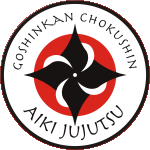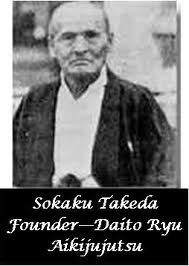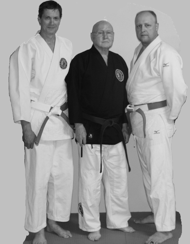

The History of Goshinkan Chokushin Aiki-Jujutsu:

Goshinkan Chokushin Aiki-Jujutsu is a Gendai ( modern eclectic ) system of martial arts who`s parent organization is Chokushin Aiki-Jujutsu, which is also a Gendai art. The techniques taught in both organizations are of Japanese origin and similar to those taught in both older and newer systems of martial arts. Both organizations teach Aiki techniques common in both Daito Ryu Aiki-Jujutsu and modern Aikido. Both organizations also have strikes as well as hip, shoulder and sacrifice throws. These types of throws may be found in older systems of Jujutsu, such as Kito Ryu and Tenshin Shinyo Ryu as well modern Judo. Judo however differs in that its techniques are taught mainly for sports competition and many of its techniques have been modified for that purpose.

The main difference between the Goshinkan organization and the Kawartha Chokushin group is the emphasis placed on the purpose of the training. Goshinkan means: place or house of ( kan ) self defense ( Goshin ), which is the primary focus of training within the Goshinkan organization. The Goshinkan organization also teaches skills not taught by the Kawartha Chokushin Group, those skills being: ground fighting (newaza), stick fighting (hanbo/jo-jutsu),knife fighting(tanto-jutsu) and sword fighting(ken-jutsu). Kawartha Chokushin Aiki-Jujutsu (beginning in 2009 ) has taken a shift in both its philosophy and technical training. The Kawartha Chokushin organizations focus has become spiritual growth and self development for the betterment of the soul. Technically there are less Atemi (strikes) and the throws have become softer, more rounded and aesthetic, with an emphasis on fluidity over the effectiveness of application for self defense. These changes liken the Kawartha Chokushin group more to some systems of Aikido than the older more combative systems of Jujutsu and Aiki-Jujutsu.

Both organizations practice Chokushin Aiki-Jujutsu under separate system heads. Goshinkan is headed and directed by Shihan Al Evans the original head of Chokushin Aiki-Jujutsu in Canada. Shihan Evans had come out of retirement to assist the Goshinkan organization in continuing the growth and development of Chokushin Aiki-Jujutsu as he ( and his Sensei ) had envisioned it. The Kawartha Chokushin Organization is headed by Paul Fox ( Menkyo Kaiden 9th-10th dan ) who took over Chokushin Aiki-Jujutsu after Shihan Evans initially retired.
Sensei Glen Pitcher holds the rank of Kaiden ( 10th dan ) in Chokushin Aiki-Jujutsu under Shihan Al Evans and Sensei Phil Anderson holds the rank of Menkyo Kaiden ( 8th-9th dan ) who was the head of the Koroshin Dojo in Havelock Ontario prior to his retirement. The other four Black Belts ( Sensei Norm Jolin, Sensei Thomas Exner, Sensei Matt Flesher and Sensei Curtis Lawson ) of Musubi Dojo hold the rank of Kirikami ( 1st-3rd dan ) in Chokushin Aiki-Jutsu. Koroshin Dojo in Havelock has two Black Belts under Sensei Phil Anderson and they are Sensei Sue Sergeant Mokuroku (4th-5th dan) and Brett Humphrey Kirikami (1st-3rd dan).
Neither organization is wrong in its interpretation of the techniques but simply have different goals in mind. Both organizations have mutual respect for each other regardless of differences in philosophy.